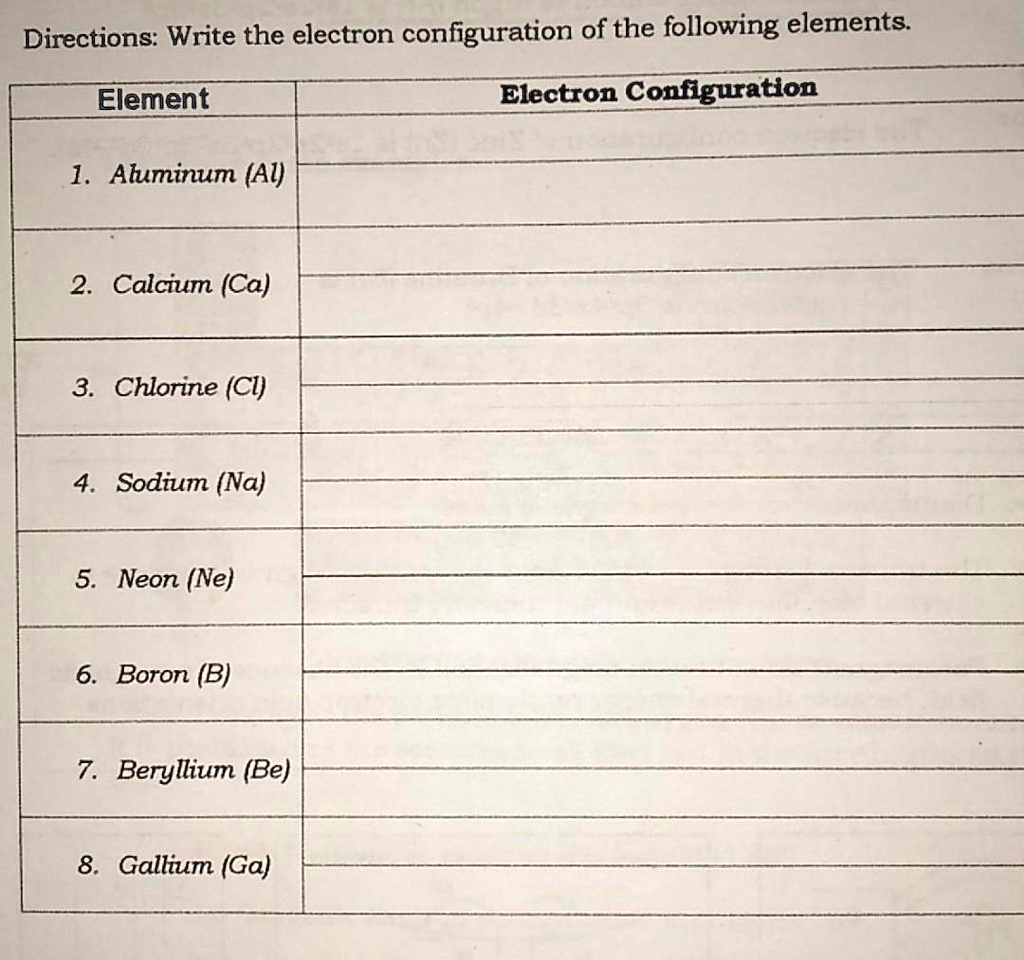Write the electron configuration of the following elements Element Electron Configuration 1 Aluminum (Al) 2. Calcium (Ca) 3. Chlorine (Cl) 4 Sodium (Na) 5. Neon (Ne) 6. Boron (B) 7. Beryllium (Be) 8. Gallium (Ga)

The Correct Answer and Explanation is:
Here are the correct electron configurations for the elements you listed:
- Aluminum (Al): 1s² 2s² 2p⁶ 3s² 3p¹
- Calcium (Ca): 1s² 2s² 2p⁶ 3s² 3p⁶ 4s²
- Chlorine (Cl): 1s² 2s² 2p⁶ 3s² 3p⁵
- Sodium (Na): 1s² 2s² 2p⁶ 3s¹
- Neon (Ne): 1s² 2s² 2p⁶
- Boron (B): 1s² 2s² 2p¹
- Beryllium (Be): 1s² 2s²
- Gallium (Ga): 1s² 2s² 2p⁶ 3s² 3p⁶ 3d¹⁰ 4s² 4p¹
Electron configuration describes how electrons are distributed in an atom’s energy levels and orbitals. Each atom has a nucleus surrounded by shells of electrons, and these shells are divided into subshells labeled s, p, d, and f. The configuration begins at the lowest energy level and fills upward.
Understanding these configurations helps explain chemical behavior. For example, elements with similar outer electron configurations tend to behave alike chemically. That is why group members in the periodic table share characteristics. Chlorine, with seven electrons in its outer shell, is highly reactive and eager to gain one electron to complete its octet. Sodium, with a single electron in its third shell, easily loses that electron to form stable Na⁺ ions.
Noble gases like Neon have completely filled outer shells, making them stable and chemically inert. Transition elements such as Gallium introduce d orbitals, which add complexity and variability in oxidation states and bonding behavior.
Electron configurations also influence magnetic properties, bond types, and even physical states of matter. For instance, elements with unpaired electrons can exhibit paramagnetism, while those with all electrons paired are typically diamagnetic.
This foundational concept is central to understanding periodic trends, chemical bonding, and atomic structure across the sciences
.
